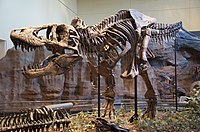Lagerstätte

Imagine you are playing in the sandpit at the park, and you find a little treasure, like a shiny rock or seashell. Now imagine you find a really big treasure that is millions of years old and tells us a lot about Earth's history. That's what a lagerstätte is!
A lagerstätte is a place where the remains of ancient plants, animals, and other organisms are preserved in a special way. They are usually found in sedimentary rocks, where the organisms were buried quickly and they did not decay or get destroyed by scavengers or erosion. Unlike typical fossils, lagerstätte fossils are extremely well-preserved and show incredible details, like the soft body parts, tissues, and even the last meals of the animals.
Some of the most famous lagerstätten are the Burgess Shale in Canada, the Solnhofen Limestone in Germany, and the Yixian Formation in China. Scientists study lagerstätten to learn about the diversity, evolution, and ecology of life on Earth, and sometimes they find new species or even brand new branches in the tree of life.
So next time you are playing in the sandpit or exploring nature, keep your eyes open for hidden treasures that might teach us something amazing about the past!
A lagerstätte is a place where the remains of ancient plants, animals, and other organisms are preserved in a special way. They are usually found in sedimentary rocks, where the organisms were buried quickly and they did not decay or get destroyed by scavengers or erosion. Unlike typical fossils, lagerstätte fossils are extremely well-preserved and show incredible details, like the soft body parts, tissues, and even the last meals of the animals.
Some of the most famous lagerstätten are the Burgess Shale in Canada, the Solnhofen Limestone in Germany, and the Yixian Formation in China. Scientists study lagerstätten to learn about the diversity, evolution, and ecology of life on Earth, and sometimes they find new species or even brand new branches in the tree of life.
So next time you are playing in the sandpit or exploring nature, keep your eyes open for hidden treasures that might teach us something amazing about the past!
Related topics others have asked about:
